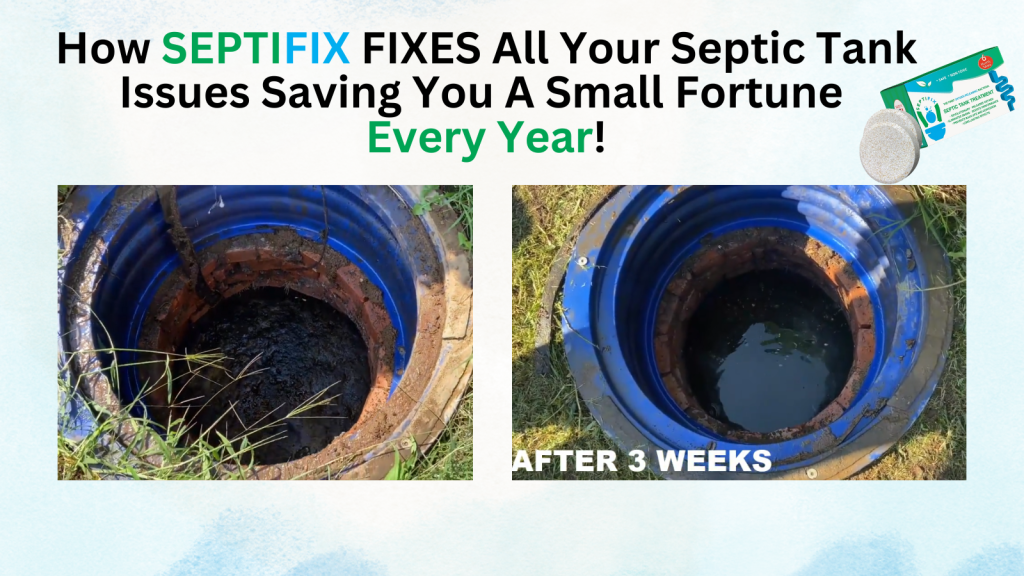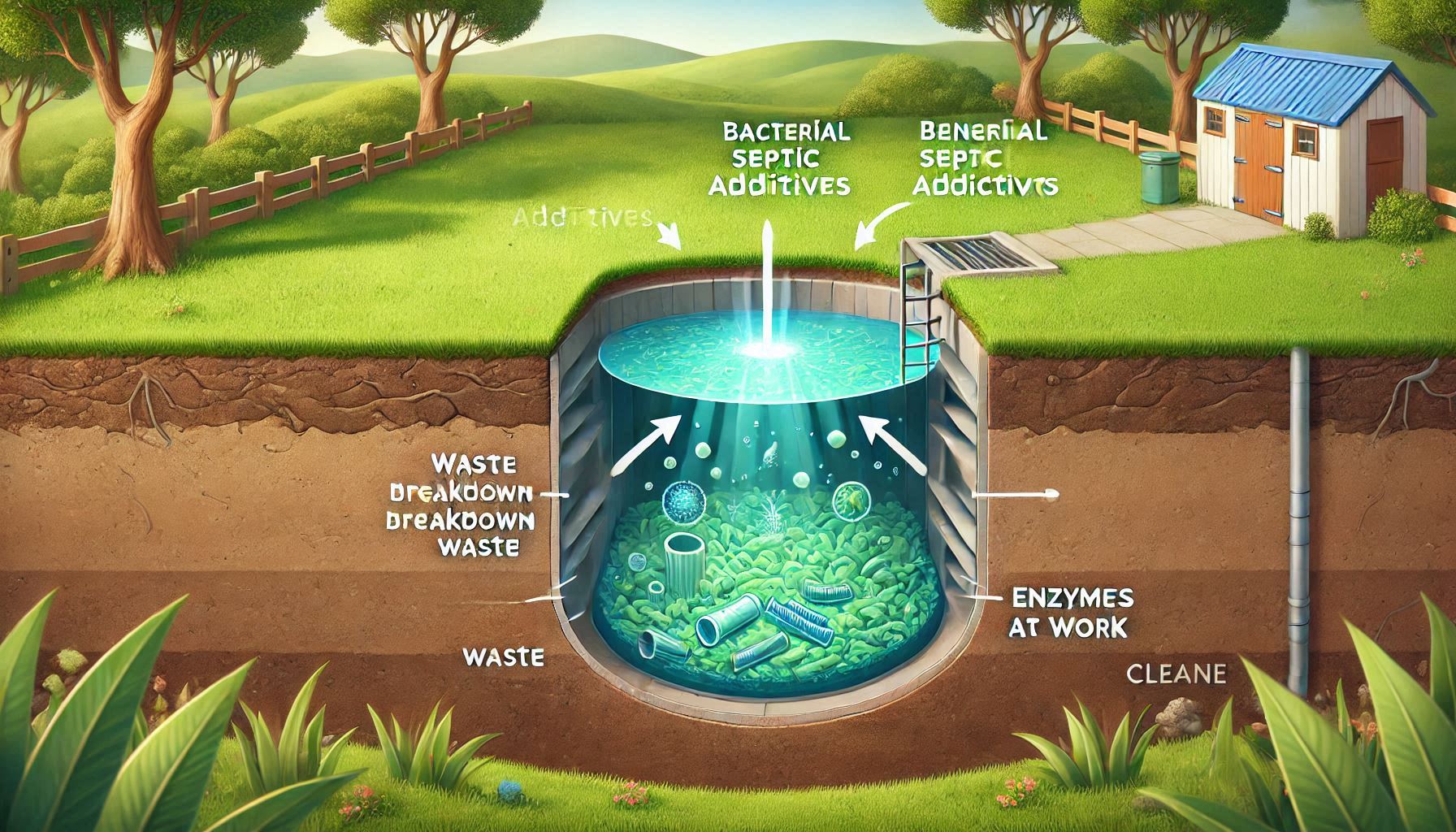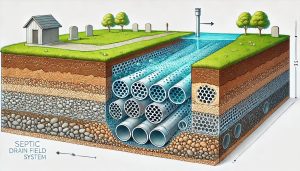Septic systems are essential for homes without access to municipal sewage systems. To keep them running smoothly, bacterial septic additives play a crucial role. These additives introduce beneficial bacteria into your system, improving waste breakdown and reducing maintenance needs. In this article, we’ll explore the benefits of bacterial septic additives, how they work, and when to use them. By the end, you’ll understand how these products can save you time, money, and effort in septic system maintenance.
Table of Contents
- What Are Bacterial Septic Additives?
- Types of Bacterial Septic Additives
- How Bacterial Additives Work in Septic Systems
- Key Benefits of Bacterial Septic Additives
- When Should You Use Bacterial Additives?
- Myths vs. Facts About Bacterial Septic Additives
- How to Choose the Right Bacterial Additives
- Frequently Asked Questions
- Septic Permit Links by State
What Are Bacterial Septic Additives?
Bacterial septic additives are specially formulated products designed to boost the natural bacterial activity in septic tanks. These bacteria break down organic waste, preventing blockages and reducing sludge buildup. In simple terms, they act like a digestive aid for your septic system.
Septic systems rely on naturally occurring bacteria to decompose waste. However, everyday household habits, like using antibacterial soaps, harsh chemical cleaners, and medications, can disrupt this bacterial balance. Bacterial additives reintroduce these essential microbes, helping your system stay balanced and functioning efficiently.
Types of Bacterial Septic Additives
There are two primary types of bacterial septic additives:
- Aerobic Additives: Require oxygen to thrive and are effective in systems with good airflow.
- Anaerobic Additives: Thrive in oxygen-deprived environments, making them suitable for most traditional septic tanks.
Choosing the right type depends on your system’s design and specific needs.
How Bacterial Additives Work in Septic Systems
When you flush waste into your septic tank, bacteria start breaking it down naturally. However, factors like harsh chemicals, antibiotics, or overuse of cleaning products can kill these helpful bacteria. Bacterial septic additives replenish and enhance these microbes, ensuring waste gets broken down efficiently. Enzymes produced by these bacteria further accelerate the process, minimizing solid buildup.
Step-by-Step Breakdown of the Process:
- Waste enters the septic tank.
- Bacteria begin digesting organic material.
- Enzymes break down complex waste into smaller, manageable particles.
- Liquefied waste flows into the drain field.
- Solid sludge settles at the bottom, reducing the risk of clogs.
Regular use of bacterial additives ensures this cycle remains uninterrupted.
Key Benefits of Bacterial Septic Additives
1. Improved Waste Breakdown Efficiency
Bacterial additives supercharge your septic tank’s ability to break down solids, reducing the risk of blockages and costly repairs.
2. Prevention of Clogs and Backups
By maintaining optimal bacterial levels, these additives prevent clogs in pipes and drain fields, ensuring smooth operation.
3. Reduced Need for Frequent Pumping
Efficient waste breakdown means less sludge accumulation, reducing the frequency and cost of pump-outs.
4. Eco-Friendly Waste Treatment
Bacterial additives provide an environmentally friendly alternative to chemical treatments, minimizing harmful effects on soil and groundwater.
5. Odor Control
A well-maintained bacterial balance can significantly reduce foul odors that often arise from septic tanks.
When Should You Use Bacterial Additives?
If you notice slow drains, foul odors, or frequent backups, your septic system might need bacterial additives. Regular use is also recommended after pumping or if you’ve recently used harsh chemical cleaners.
Signs Your System Needs Additives:
- Foul smells coming from drains or your yard.
- Slow drainage in sinks and toilets.
- Gurgling sounds from your plumbing system.
- Increased frequency of backups.
Incorporating bacterial additives into your routine maintenance can prevent these problems before they start.
Myths vs. Facts About Bacterial Septic Additives
Myth: Septic tanks don’t need additives.
Fact: While septic systems naturally contain bacteria, additives help replenish and boost bacterial activity, especially after disruptions.
Myth: Additives can replace pumping.
Fact: Additives reduce the need for pumping but can’t replace it entirely.
Myth: All bacterial additives are the same.
Fact: Different additives cater to specific septic system needs. Always choose the right product for your system.
How to Choose the Right Bacterial Additives
When selecting a bacterial additive, look for products with:
- A high concentration of active bacteria strains.
- Positive customer reviews.
- Recommendations from septic professionals.
- Certifications from environmental authorities.
Tips for Effective Use:
- Follow the manufacturer’s instructions carefully.
- Avoid using harsh chemicals after applying additives.
- Use additives consistently for the best results.
Conclusion
Bacterial septic additives are a valuable tool for maintaining a healthy and efficient septic system. They improve waste breakdown, prevent clogs, reduce maintenance needs, and offer an eco-friendly approach to waste management. Regular use can save you time, money, and headaches down the line.
Frequently Asked Questions
What are bacterial septic additives?
Bacterial septic additives are products designed to introduce or boost beneficial bacteria in septic systems to enhance the breakdown of organic waste.
Are bacterial additives necessary for my septic system?
According to the U.S. Environmental Protection Agency (EPA), septic tank additives containing bacteria or chemicals are not recommended for domestic wastewater treatment because there is already a significant presence of bacteria in onsite wastewater treatment systems.
Can bacterial additives replace regular septic tank pumping?
No, bacterial additives cannot replace the need for regular septic tank pumping. Regular maintenance, including pumping, is essential to remove accumulated solids and prevent system failure.
Do bacterial additives help in reducing septic system odors?
While some claim that bacterial additives can help reduce odors by enhancing waste breakdown, the EPA advises that the use of these additives is not recommended, as they can be ineffective or even harm system operation and the environment.
Are there any risks associated with using bacterial septic additives?
Yes, certain additives can be ineffective or even harm system operation and the environment. It’s important to consult with a septic system professional before introducing any additives to your system.









